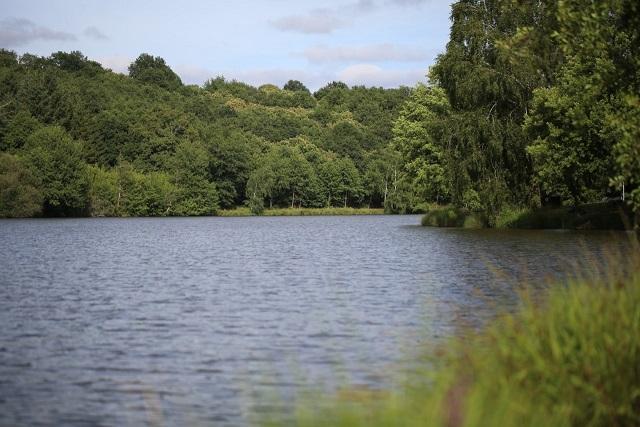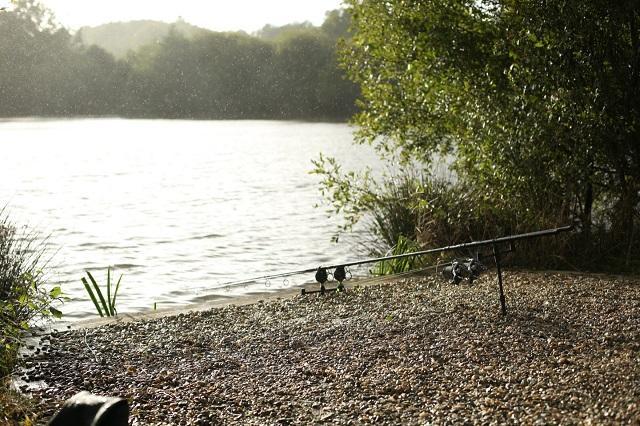Carp, like most animals, are in-tune with the weather to a level that we humans probably cannot fully comprehend. These cold-blooded creatures are pushed and pulled by the atmospheric conditions, so it should come as no surprises that some weathers are better for fishing than others. The old saying ‘when the wind is in the east, the fish will bite the least; but when the wind is in the west, the fishing it at its best’ might, in this technological age, sound like an old wives’ tale, but it’s rooted in centuries of experience. Of course, there’s much more to fish and the weather than just the wind, as this guide will attempt to spell out.
Speak to any experienced carp angler or for those of you who have read any of Terry Hearn’s books, you will know that the weather is the biggest factor in carp fishing. In Terry’s books he describes how he meticulously studied the weather reports for up to 2 weeks in the future, looking for a drop in air pressure or a new wind to plan his fishing around, ensuring he was in the right place ready for the change in conditions.
Is a southerly wind or a northerly better for carp fishing?
In Britain, we get our warmer and wetter air from the Atlantic to the south and west, and our colder, drier air from Siberia to the north and east, so that old saying makes perfect sense.

Usually a new warm south westerly wind will trigger the carp to feed
A fierce south-westerly wind, often seen in autumn, is generally as good as it gets for carp anglers, especially when it disrupts a period of stale weather. Bringing oxygen and warmth to the water, it can trigger feeding spells across the country.
However, as with most things in life, these winds are best when they’re new and exciting. After a while, carp have a tendency to settle down during a prolonged period of similar conditions – even favourable ones. You might find that getting into position in the teeth of a predicted south-westerly before it hits will see you reap rewards when the wind blows. After a while, the carp may even back off and sit on the back of such a wind.
Low air pressure conditions usually means the carp are more catch-able
Effectively the weight of the air pushing down on the water, atmospheric pressure can be a big determining factor in whether or not to grab your rods or stay indoors.

A band of low pressure is usually associated with good fishing conditions
It is perhaps more crucial in winter, when feeding spells can be shorter and further apart, but what should you look for? Low air pressure generally means unsettled weather, which tends to be favoured by carp anglers. Due to the effects of air pressure on their swim bladders, carp tend to sit lower in the water in these conditions and are susceptible to bottom baits or low pop-ups.
It can be particularly beneficial to time your session just before the arrival of a new pressure band. Most anglers can probably recall a lake coming alive just before a storm hits.
High air pressure is associated with more settled, warmer weather and worse fishing, but that is not always the case. In these conditions, even in winter, carp can be found nearer the surface of the water and zig rigs can be a great tactic.
An atmospheric pressure of 1020mb or below is generally considered low and therefore better for fishing. Once you get below 1000mb it can get stormy, and very good for fishing. As just one recent example, Terry Hearn’s capture of the Parrot from Wasing came during Storm Doris in 2017.
How does temperature effect a carp’s behaviour
Probably less crucial than you might think, and less crucial than the two elements above. Water takes a lot longer to warm and cool than air, so a sharp cold snap or sudden heatwave won’t necessarily have dramatic effects, especially on deeper venues.

That said, carp are very aware of temperature and many anglers prefer to chart water temperatures in Fahrenheit rather than Celsius to spot smaller variations. Taking a thermometer
with you and plotting water temperature against catches can be really useful for seeing the bigger picture and noticing trends on your venue.
Shallower waters will react quickest to temperature changes, and finding shallower marginal spots during the first warm days of spring can be very productive.
In winter, when daylight hours are shortest, it can pay to target areas that receive the most sun, no matter how weak it is during those months.
Do carp feed more in the rain?
Less concern for the still water angler, rain can still have an impact on your fishing. On rivers if you are fishing for carp, the period a couple of days after heavy rainfall can be perfect conditions. The river will have coloured up due to soil and nutrients washing in, but the flow will be receding so you can present a bait more easily. For carp anglers on lakes, the impact is smaller, but if your venue features a stream or inlet that pushes new water through after heavy rainfall then inquisitive carp are unlikely to be far away.




